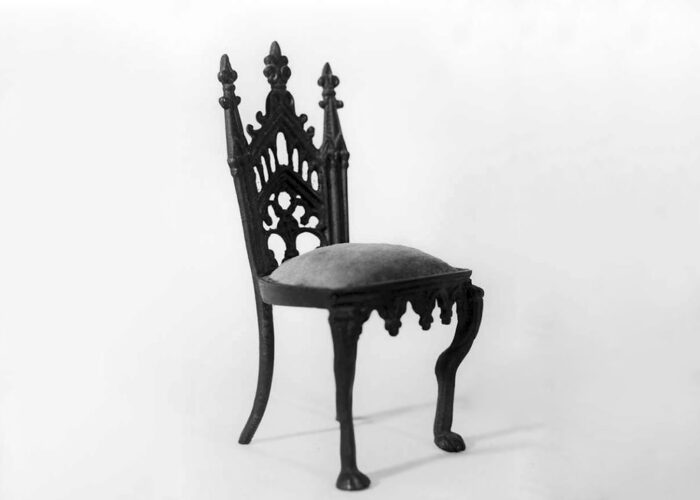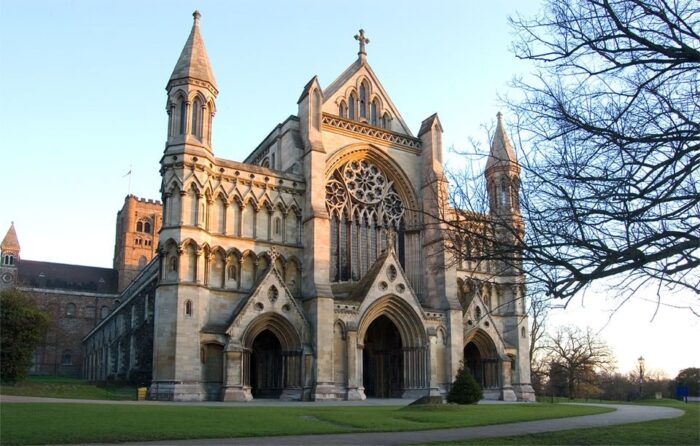Puntaspilli neogotico
Neo-Gothic pincushion in the shape of a chair
Description of the neo-Gothic pincushion
Metal sewing pincushion. It has the shape of a neo-Gothic style chair. The backrest, in fact, recalls the shape of a Gothic church pediment. The rear legs are sabre-shaped, typically in Empire style, while the front ones are typically Rococo (Louis XV) arched cabriole. Considering this, it can’t be a medieval object, so it’s from the 1800s. For more info on styles, see Style Comparison.confronto tra gli stili.
Metallic pincushion with the shape of a Neo-Gothic chair. The backrest, in fact, reminds to the shape of the pediment of a gothic church. The rear legs are saber-shaped, typically Empire-style, while the fronts are the typically arched cabriole (Louis XV). Considering this, it can’t be a medieval object, so it is form the 1800. For more information on styles, see style comparison.
As mentioned in the previous paragraph, the Neogothic, being a style of British origin, was probably imported into the Kingdom of the two Sicilies through close contact between the royal family and England, as happened, for example, with Emma and Lord Hamilton.
The Neo-Gothic style
Neo-Gothic was born in the second half of the eighteenth century, but developed only in the mid-nineteenth century. It is defined as Neo-Gothic as inspired by the architecture of 1300-1400. So we see in the objects (furniture, ornaments, wallpaper, etc) pointed arches, bundles of columns and pinnacles, vegetable stylizations with carving and fretwork or geometric inlay. England was the master of this style which boasted a centuries-old attachment to the forms of the local Gothic, taken up, between 1820 and 1850, with absolute fidelity even in the choice of materials, from the simple and massive furniture of Augustus W. N. Pugin, Charles Seddon and later , albeit in more modest forms, both from the production of Morris, Faulkner & Co., the Pre-Raphaelite applied arts firm founded in 1861 by William Morris, and from Arts and Crafts.
External link
–



